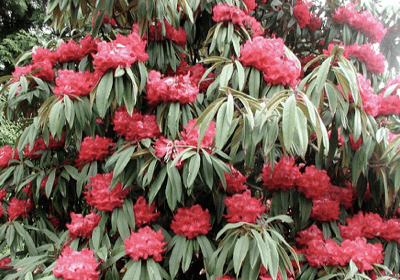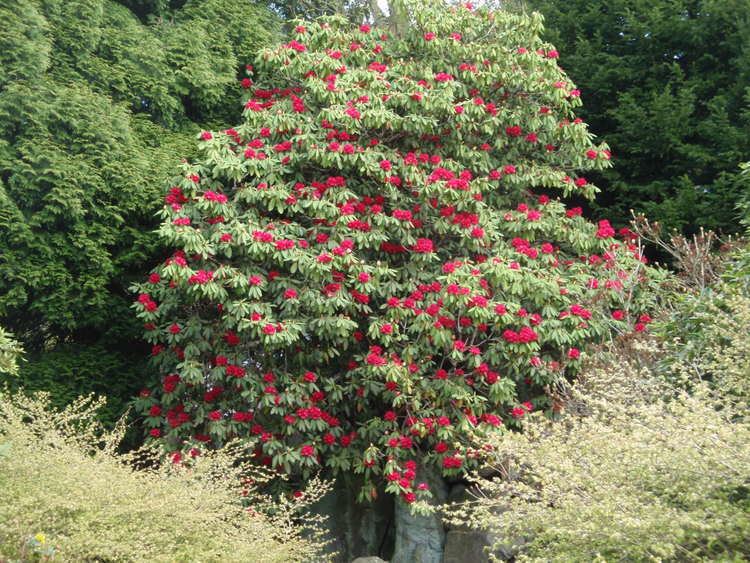Subgenus Hymenanthes Rank Species | Scientific name Rhododendron arboreum | |
Higher classification Rhododendron subg. Hymenanthes Similar Rhododendron ponticum, Rhododendron hirsutum, Rhododendron catawbiense, Rhododendron canadense, Rhododendron luteum | ||
Rhododendron arboreum tree rhododendron in landour
Rhododendron arboreum, the tree rhododendron, also known as burans or gurans, is an evergreen shrub or small tree with a showy display of bright red flowers. It is found in Bhutan, China, India, Myanmar, Nepal, Sri Lanka, Pakistan and Thailand. Rhododendron arboreum is the national flower of Nepal; in India it is the state tree of Uttarakhand and state flower of Himachal Pradesh and Nagaland.
Contents
- Rhododendron arboreum tree rhododendron in landour
- Tree rhododendron rhododendron arboreum flowering in the himalayas
- Description
- Cultivation
- Variants
- Threats
- In Sri Lanka
- References

Tree rhododendron rhododendron arboreum flowering in the himalayas
Description

Its name means "tending to be woody or growing in a tree-like form". It has been recorded as reaching heights of up to 20 m, although more usually it has a height and spread up to 12 m (36 ft) x 12 m (36 ft). This plant holds the Guinness Record for World's Largest Rhododendron. The tree discovered in 1993 at Mt. Japfü in Kohima district of Nagaland, India, holds the Guinness Record for the tallest Rhododendron at 108 ft measured at the time of discovery which is still growing.

In early- and mid-spring, trusses of 15–20 bell-shaped flowers, 5 cm (2 in) wide and 3–5 cm (1.25–2 in) long are produced in red, pink or white. They have black nectar pouches and black spots inside.
Cultivation

It prefers moist but well-drained, leafy, humus-rich, acid soil, in dappled shade. It has broad, dark green leaves, 7–19 cm (3–7 in) long, with a silvery, fawn or brown hairy coating beneath.
This plant is suitable for woodland gardens.
Shelter is imperative to prevent wind damage to leaves.
Variants
Threats
Rhododendrons are susceptible to vine weevil, rhododendron and azalea whiteflies, leafhoppers, lacebugs, scale insects, caterpillars, aphids, powdery mildew, bud blast, honey fungus, rust, leafy gall, petal blight, silver leaf, phytophthora root rot and lime-induced chlorosis.
In Sri Lanka
The plant is known as Maha ratmal, Maha Rath Mal, Asela mal in Sinhala. The Sinhalese name "rathmal" is mostly used for the Ixoras, which are not in this family. However, the Rhododendrons are not a common plant in Sri Lanka, and the unsystematic local name seems to be"Maha-rathmal", i.e., "Big-Ixora", applied to smaller varieties which are more like ornamental Azelias. Hence the name "asela-mal", probabaly adapted from "Azelia" by horticulturists, may be more appropriate.It prefers a colder dry climate than what is available in most parts of Sri Lanka.
